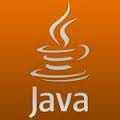This article lists over 200+ questions for the Java interview. These questions are most frequently asked by the Java interviewers. If you are preparing for the Core java interview, this questions will be much helpful to understand the nature of questions. Note that this preparations would be very much suitable for the beginners and the …
Java
HashCode and equals methods
HashTable, HashMap and HashSet are the Collection classes in java.util package that make use of hashing algorithm to store objects. In all these Collection classes except HashSet, objects are stored as key-value pairs. For the storage and the retrieval of any user-defined objects it is a good practice to override the following methods which is …


